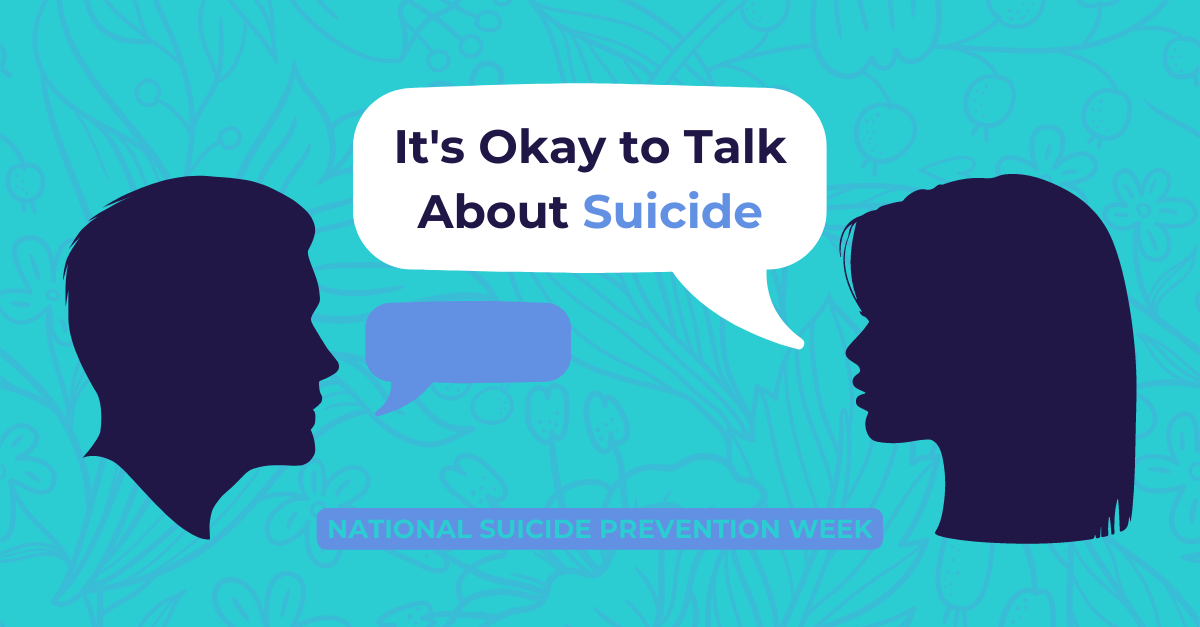September 9th, 2020

Suicide oftentimes originates from a feeling of extreme hopelessness. It’s the thought that there is no other way to get emotional or physical relief than to end one’s life.
The thoughts “I want to die” and “I am depressed” repeat themselves. This feeling alone is desperate enough, not to mention the stigma and hurtful beliefs around those who show signs of suicide. Where do you go from there and what can you do to get the help you need?
While all other leading causes of death in the United States have decreased in numbers, suicide has been steadily increasing. This statistic awoke a passion in me for ensuring a safe space for people and preventing suicide.
Suicide and its prevention are near and dear to my heart. The grandmother I never met ended her life, a cousin battling substance abuse ended his life. As a therapist, I do not want any hurting person to think that ending their life was the only way out.

Thoughts of suicide can be experienced by anyone, however, there are specific populations that experience higher rates of suicide. A common misconception is suicidal thoughts are only observed in people battling depression. In fact, many conditions and circumstances can prompt the feeling of depression. Chronic illnesses, responses to trauma, and symptoms of different mental health issues can all invoke suicidal thoughts.
One thing that brings me peace and hope is knowing that suicide is 100% preventable. Suicide prevention is multi-layered and involves many systems. It takes dedicated efforts to stop suicide. On a macro level, a key component is ensuring that everyone has access to the care they need. This includes providing equal access to therapy, insurance coverage for quality physical and mental health care, and fair housing.
Our society is sorely lacking in public servants, such as teachers and police, that are trained in basic mental health. While solving these issues is indeed a massive obstacle, there are plenty of ways we can contribute on an individual level. This may include conversations with our loved ones and friends with the hopes of decreasing stigma and normalizing these tough conversations. Suicide prevention is the responsibility of all, not just those that work in mental health and crisis services.
One of the most important ways to prevent suicide is through seeking and maintaining care from mental health professionals such as therapists, psychiatric providers, and/or crisis counselors. Mental health therapy and medications can help manage the symptoms of mental illness that lead to experiencing thoughts of suicide. Through individual therapy, one can learn how to better cope and manage symptoms of their mental illness.
Certain medications can also help alleviate suicidal ideation, and this isn’t limited simply to antidepressants. For instance, if an individual is experiencing extreme discomfort due to schizophrenia or bipolar disorder, an antipsychotic or a mood stabilizer can help them manage their symptoms.
Don’t be afraid! Reaching out for help is the best gift you can give yourself.


If you are feeling motivated to make a change toward a kinder world, here are some ideas.
Again, suicide is a public health crisis but is entirely preventable. Suicide does not have to happen. We can keep our loved ones here by taking action toward its prevention.
Suicide does not have to be scary, embarrassing, or taboo. Rather, feeling suicidal is completely normal. Engaging in positive discourse will help remove the existence of suicide from our world.
Take steps toward educating yourself, having conversations, and normalizing humanity and kindness. The effort will pay off.

Our Services
Virtual/Online CarePHP and IOPAdult PsychiatryChild & Adolescent PsychiatryAdult TherapyChild & Adolescent TherapyCouples CounselingFamily TherapyGroup TherapyPsychological TestingTranscranial Magnetic Stimulation (TMS)Resources
Refer a PatientCareersClinical Training OpportunitiesOur ProvidersFree Mental Health TestsCommonly Prescribed MedicationsLocationsBlogIn The NewsClarity Through CharityClarity for AllQuick Links
Patient PortalFAQsAccepted InsurancesContact us